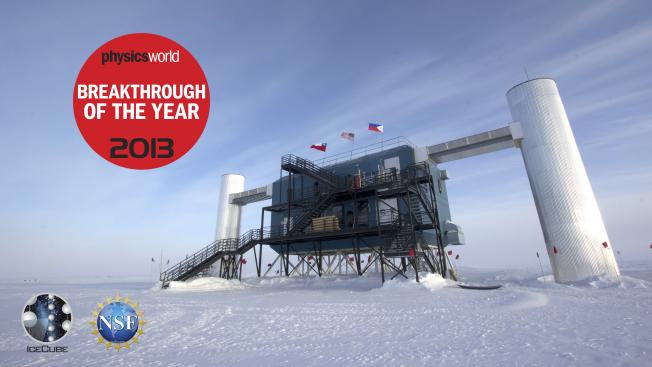Loops and spurs: The angular power spectrum of the Galactic synchrotron background
(2013)
Measurement of South Pole ice transparency with the IceCube LED calibration system
ArXiv 1301.5361 (2013)
Abstract:
The IceCube Neutrino Observatory, approximately 1 km^3 in size, is now complete with 86 strings deployed in the Antarctic ice. IceCube detects the Cherenkov radiation emitted by charged particles passing through or created in the ice. To realize the full potential of the detector, the properties of light propagation in the ice in and around the detector must be well understood. This report presents a new method of fitting the model of light propagation in the ice to a data set of in-situ light source events collected with IceCube. The resulting set of derived parameters, namely the measured values of scattering and absorption coefficients vs. depth, is presented and a comparison of IceCube data with simulations based on the new model is shown.Bounds on the density of sources of ultra-high energy cosmic rays from the Pierre Auger Observatory
Journal of Cosmology and Astroparticle Physics 2013:5 (2013)
Abstract:
We derive lower bounds on the density of sources of ultra-high energy cosmic rays from the lack of significant clustering in the arrival directions of the highest energy events detected at the Pierre Auger Observatory. The density of uniformly distributed sources of equal intrinsic intensity was found to be larger than ∼ (0.06-5) × 10-4 Mpc-3 at 95% CL, depending on the magnitude of the magnetic deflections. Similar bounds, in the range (0.2-7) × 10-4 Mpc-3, were obtained for sources following the local matter distribution. © 2013 IOP Publishing Ltd and Sissa Medialab srl.Evidence for high-energy extraterrestrial neutrinos at the icecube detector
Science 342:6161 (2013)
Abstract:
We report on results of an all-sky search for high-energy neutrino events interacting within the IceCube neutrino detector conducted between May 2010 and May 2012. The search follows up on the previous detection of two PeV neutrino events, with improved sensitivity and extended energy coverage down to about 30 TeV. Twenty-six additional events were observed, substantially more than expected from atmospheric backgrounds. Combined, both searches reject a purely atmospheric origin for the 28 events at the 4σ level. These 28 events, which include the highest energy neutrinos ever observed, have flavors, directions, and energies inconsistent with those expected from the atmospheric muon and neutrino backgrounds. These properties are, however, consistent with generic predictions for an additional component of extraterrestrial origin.The angular power spectrum of the Galactic radio background
Proceedings of the 33rd International Cosmic Rays Conference, ICRC 2013 2013-October (2013)



